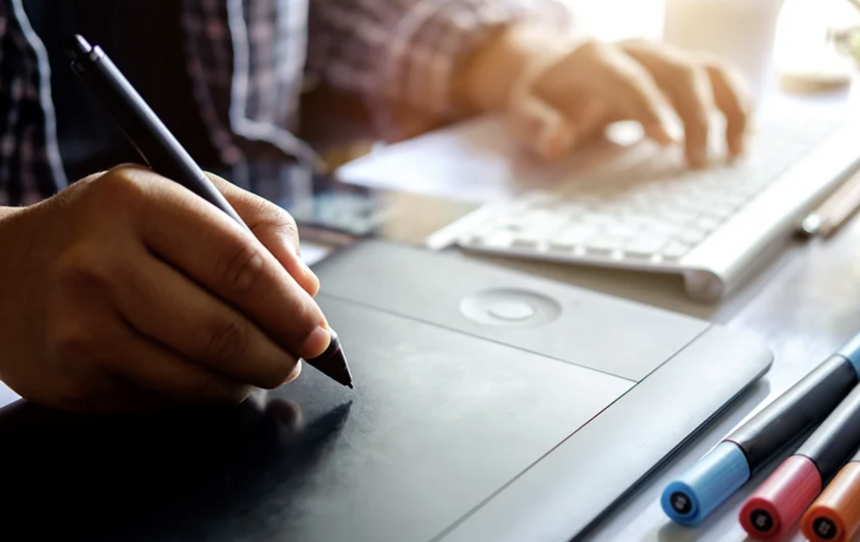Comic book illustration has come a long way since its beginnings, and with the emergence of digital art tools and programs, the industry is showing no signs of slowing down. Digital tools have simplified the process of creating artwork, allowing artists to produce stunning visuals in less time.
However, traditional drawing still offers the tactile experience many artists prefer, allowing them to feel the medium as they work. The freedom of using a pencil or brush on paper is difficult to replicate with a digital tablet, and the finished product often has a unique look and feel that cannot be replicated digitally.
Still, as technology evolves, the line between digital art and traditional drawing becomes increasingly blurred. Many artists now combine both techniques to achieve their desired results.
In this article, we will explore the advantages of both digital and traditional comic book illustration and discuss the future of comic book illustration.
The Benefits of Using Digital Tools to Illustrate Comic Books
Digital art has become increasingly popular in recent years, thanks to the development of powerful digital software. The advantages of digital art in creating comic book illustrations are numerous and varied. So, let’s check them out.
Speed and Efficiency
One of the most significant advantages of using digital tools to illustrate comic books is their speed and efficiency. Using them, artists can quickly and easily create sketches and designs, experiment with different color palettes, and make revisions without starting from scratch. This saves time and allows artists to be more productive and create more work in less time.
Versatility
With digital tools, artists can create various styles and effects that would be difficult or impossible to achieve with traditional drawing methods. This includes everything from complex shading and lighting effects to dynamic panel layouts and intricate character designs.
Cost-Effectiveness
Digital art is a cost-effective option when compared to traditional drawing methods. It eliminates the need for expensive supplies such as paper, pencils, and ink. Additionally, digital files can be effortlessly shared and distributed online, thus avoiding printing costs.
Advanced Tools and Software
The advancements in digital art tools and software have made it easy for artists to create complex and intricate illustrations. Digital art software like Adobe Photoshop, Procreate, and Clip Studio Paint offers a wide range of features to help artists achieve their desired results quickly and efficiently.
Flexibility and Experimentation
Digital art allows artists to experiment with different styles, color palettes, and textures. With the ability to make changes and adjustments quickly and easily, artists can explore other creative possibilities and push the boundaries of what is possible in comic book illustration.
Ease of Editing
Corrections and changes can be difficult or impossible with traditional drawing methods without starting from scratch. In contrast, digital art allows artists to make revisions and adjustments to their work quickly and easily without damaging the underlying artwork. Just make sure to save your progress after each step.
Automation
Digital art also offers the potential for automation, allowing artists to streamline certain parts of the illustration process. For example, digital software can automatically fill areas with a particular color, reducing the amount of time and effort required for repetitive tasks.
Accessibility
Digital art tools and software are now more accessible than ever, with many programs available for free or cheap. This has opened up opportunities for artists of all backgrounds and skill levels to experiment with digital art and incorporate it into their comic book illustration work.
Collaborative Potential
Finally, digital art also has collaborative potential. With online tools and platforms, artists from all over the world can easily collaborate with each other in real-time. This allows for the sharing of ideas and techniques and can lead to the creation of truly unique and innovative works of art.
The Advantages of Traditional Drawing
Although digital tools offer many benefits, traditional drawing methods still have unique advantages in comic book illustration. We’ll explore them in the following paragraphs.
Tactile Experience
As we already mentioned, tactile experience is one of the main advantages of traditional drawing methods. Working with pencils, ink, and paper provides a unique sensory experience that many artists find rewarding. It allows them to feel the medium as they work and connect with their art on a deeper level.
Authenticity and Character
Traditional drawing has a unique and authentic quality that is difficult to replicate with digital tools. Hand-drawn illustrations often have a personal touch that can bring a sense of character to a comic book. This can be particularly important in specific genres, such as historical fiction or memoir, where authenticity is highly valued.
Skill Development
Working with traditional drawing materials requires a certain level of dexterity and control, which can help artists develop their technique and precision. This can also translate into stronger digital art skills as artists learn to apply the same level of control and attention to detail to their digital work.
Traditional drawing also allows artists to work without digital tools, which can help develop a strong foundation in art fundamentals. If you want to illustrate a comic book in a traditional way, make sure to check out Biowars’ drawing tutorials such as the eye drawing tutorial by a professional comic book artist.
Versatility
Traditional drawing methods can also be versatile, allowing artists to experiment with different materials and techniques. This can include everything from charcoal and ink to watercolor and colored pencils. These materials can create unique textures and effects that are difficult to replicate with digital tools.
Freedom and Creativity
Finally, traditional drawing allows for a sense of freedom and creativity. Unlike digital tools, traditional drawing has no shortcuts or automated features. This can be liberating for artists who prefer complete control over their work and enjoy creating art from scratch.
Timelessness
Another advantage of traditional drawing methods is their timelessness. This is especially true in the world of comic book illustration, where classic works like Watchmen and The Dark Knight Returns continue to inspire and influence new generations of artists.
Emotional Connection
Finally, traditional drawing methods can also create a deeper emotional connection between the artist and the artwork. The physical act of creating a piece of artwork can be a meditative and therapeutic process, allowing artists to connect with their emotions and express them through their work.
Final Thoughts: The Future of Comic Book Illustration
As technology evolves, so does the future of comic book illustration. With advancements in digital art tools and techniques, comic book artists are now able to create more complex and dynamic illustrations than ever before.
Digital platforms have made it easier for comic book artists to collaborate remotely, allowing for greater diversity in styles and perspectives. Augmented reality (AR) and virtual reality (VR) technologies are also starting to make their way into the comic book world, providing readers with even more immersive experiences.
Another exciting development that offers new possibilities for artists is the use of artificial intelligence (AI) in digital comic book illustration. With the ability to automate certain tasks such as coloring and shading, AI can help artists save time and focus on the creative aspects of their work. As AI continues to develop, we can expect to see even more advanced tools and techniques that will further enhance the art and craft of comic book illustration.
However, as much as technology has revolutionized the field, there is still a place for traditional techniques in comic book illustration. Hand-drawn art has a unique and personal quality that is difficult to replicate with digital tools alone. Many artists continue to use a combination of traditional and digital techniques to create their work, allowing them to achieve the best of both worlds.
Overall, the future of comic book illustration is exciting and full of possibilities. As technology continues to evolve, we can expect to see even more innovation in the field, as well as new voices and perspectives. Whether created with traditional or digital techniques, comic book illustrations will continue to captivate and inspire readers for generations to come.
Lynn Martelli is an editor at Readability. She received her MFA in Creative Writing from Antioch University and has worked as an editor for over 10 years. Lynn has edited a wide variety of books, including fiction, non-fiction, memoirs, and more. In her free time, Lynn enjoys reading, writing, and spending time with her family and friends.















